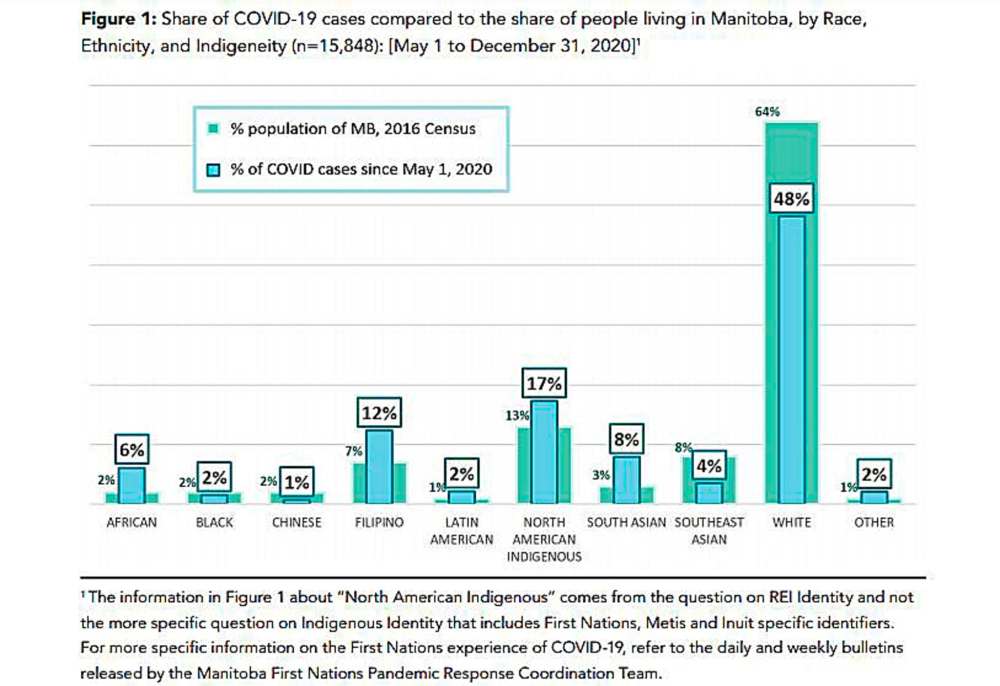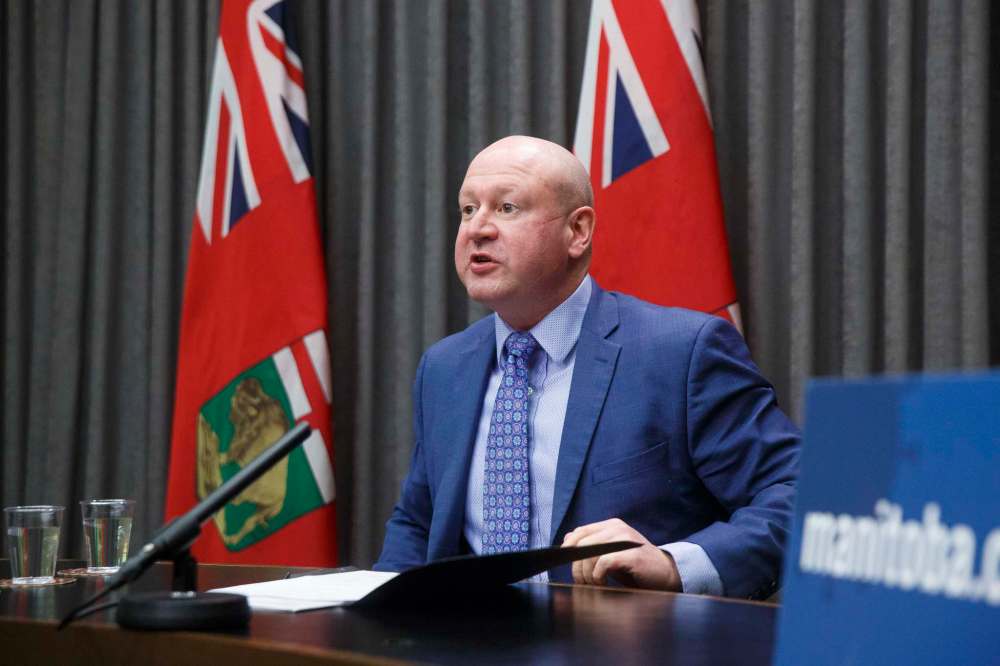COVID-19 hitting BIPOC harder: Report
Advertisement
Read this article for free:
or
Already have an account? Log in here »
We need your support!
Local journalism needs your support!
As we navigate through unprecedented times, our journalists are working harder than ever to bring you the latest local updates to keep you safe and informed.
Now, more than ever, we need your support.
Starting at $15.99 plus taxes every four weeks you can access your Brandon Sun online and full access to all content as it appears on our website.
Subscribe Nowor call circulation directly at (204) 727-0527.
Your pledge helps to ensure we provide the news that matters most to your community!
To continue reading, please subscribe:
Add Brandon Sun access to your Winnipeg Free Press subscription for only
$1 for the first 4 weeks*
*$1 will be added to your next bill. After your 4 weeks access is complete your rate will increase by $4.99 a X percent off the regular rate.
Read unlimited articles for free today:
or
Already have an account? Log in here »
Hey there, time traveller!
This article was published 02/03/2021 (1674 days ago), so information in it may no longer be current.
The province released a report Monday on race, ethnicity and Indigeneity related to COVID-19.
The data shows a similar pattern as reported by other jurisdictions — African, Filipino, Latin American, North American Indigenous and South Asian communities are disproportionately affected by COVID-19 infections.
Dr. Brent Roussin made the announcement at the Monday news conference, but Health and Seniors Care Minister Heather Stefanson also released her own statement.

“It is important to understand how the COVID-19 pandemic has affected Manitobans differently based on their race, ethnicity or Indigeneity. That is why Manitoba was the first jurisdiction in Canada to start collecting this data in relation to COVID-19 cases in May 2020,” stated Stefanson.
The report was compiled by public health officials, while an advisory working group with representatives from the Black, Indigenous and persons of colour (BIPOC) communities supported the data collection and sharing process.
“We have learned that in the fight against COVID-19, we need to have the right data to ensure we are able to take the steps needed to protect all Manitobans,” stated Stefanson.
The report states that data from around the world has shown COVID-19 infections are not evenly distributed by population groups. The information in the report comes from people who have tested positive for COVID-19 in Manitoba.
When Roussin announced the report, he stressed that it is important to note the information is not about the people in those communities making bad choices or people not following public health guidance.
“We know people in BIPOC communities are more likely to live in lower-income neighbourhoods and live in overcrowded, multi-generational households,” said Roussin. “They’re also more likely to have low-wage occupations and be employed in high-risk occupations, such as food manufacturing, service industries, transportation, accommodations, food services and retail. This is systemic, and it’s seen in every jurisdiction, resulting in very similar patterns of the disproportional effects of COVID-19.”
But the report also states the question about race, ethnicity and Indigeneity wasn’t asked at the same rate in every region.
“Since the regions also vary with respect to the demographics of who lives there, this does impact what the data shows,” states the report.
“The data is more reliable when the question is asked at least 75 per cent of the time, and the goal is to have it asked more than 90 per cent of the time.”
The results in the report reflect the fact that in Manitoba, the mandatory question was asked and the answer recorded in the Public Health Information Management System in 67 per cent of case investigations.
Fifty-one per cent of people who have tested positive for COVID-19 in Manitoba from May 1 to Dec. 31 self-identify as BIPOC. According to the report, this is 1.5 times higher than expected, as 35 per cent of people in Manitoba belong to a BIPOC group, based on the 2016 Statistics Canada Census.
This shows that COVID-19 is not equally distributed across population groups.
At the time of data collection, 90 per cent (710 people) of all cases were 15 years or older. Of those cases, 46 per cent (324 people) provided their occupation. Among people who reported their employment status, 74 per cent also reported their race/ethnicity (239 people), according to the report.
Food manufacturing saw the highest rate of COVID-19 at 30 per cent, while the second-highest rate, 15 per cent, was found in the service industry.
The data also shows white people are under-represented by 16 percentage points, with the burden of disease lowest for white men.
Asked what specific changes could be made by public health to improve the outcomes reported, Roussin said there have been a number of actions taken, such as collecting the data, figuring out how it would be reported and working with the members of the BIPOC communities.
“We’ve been working on trying to have access to our information in many languages. There’s the federal income support for the people who are required to self-isolate,” said Roussin.
“We’ve had a number of outreach areas in certain districts, where we saw higher case numbers, many of them being the over-represented groups on here. Things like rapid testing and contact tracing. We’re going to continue working with those groups, try to identify ways that we can further improve things.”
He also said public health will encourage that more of this data be collected. The goal is to continue to work with the groups to find better solutions.
It’s uncertain how the data will affect the vaccine rollout.
“We’re continuing to look at the vaccine rollout and the high-risk categories, keeping in mind the logistics and the scarcity of vaccine. Overall, the most important risk factor that we’ve seen is age, so we’ll continue to try to follow as much as we can an age-based approach to it,” said Roussin.
“But for sure we look at all these factors and working with these communities to see what other approaches might be required.”
Meanwhile, Stefanson said the report is “another example of how we are guided by science and facts when developing a strategy for our pandemic response system and vaccination distribution plan, to protect every Manitoban.”

The report can be read at bit.ly/304Sutk
» mletourneau@brandonsun.com
» Michele LeTourneau covers Indigenous matters for The Brandon Sun under the Local Journalism Initiative, a federally funded program that supports the creation of original civic journalism.
MONDAY’S COVID-19 UPDATE
The province announced one death in Monday’s COVID-19 update — a male in his 60s from the Winnipeg Health region.
The province reported 35 new cases. The new cases are as follows:
• two cases in the Interlake–Eastern health region;
• 16 cases in the Northern health region;
• zero cases in the Prairie Mountain Health region;
• one case in the Southern Health–Santé Sud health region; and
• 16 cases in the Winnipeg health region.
The five-day COVID-19 test positivity rate was 3.9 per cent in the province, and three per cent in Winnipeg.
Lab-confirmed cases in Manitoba since the beginning of the pandemic total 31,894.
The province reports 1,171 active cases and individuals who have recovered total a reported 29,827.
The province also reported 68 people are in hospital with active COVID-19, as well as 116 people in hospital with COVID-19 who are no longer infectious but continue to require care, for a total of 184 hospitalizations.
Twelve people are in intensive care units with active COVID-19, as well as 13 people with COVID-19 who are no longer infectious but continue to require critical care, for a total of 25 ICU patients.
In the PMH region, there are a reported 12 active cases, with 1,993 recovered. There are no active cases hospitalized, and four people hospitalized who are no longer infectious. There are no patients in ICU. The region has seen 53 deaths.
Brandon’s active case count is two, with 977 recovered and 22 deaths.
On Sunday, 1,220 tests were completed, for a total of 526,593 since February 2020.
» Source: Province of Manitoba
